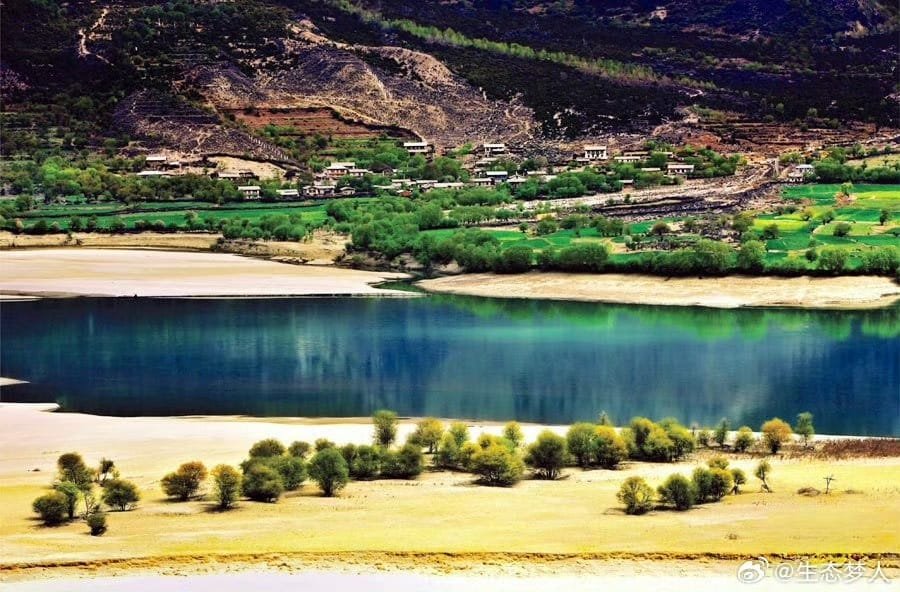The Aichu River (埃曲), also known as “Ngêxi / རྔེ་གཤིས (额哎曲), meaning “River of Desire,” flows through Karuo District in Chamdo, Tibet. Situated east of the district center, this tributary of the Lancang River (Mekong River) plays a crucial role in sustaining the region’s agriculture, biodiversity, and local communities.
A River of Fertile Lands and Abundant Life
The Aichu River Basin is one of Chamdo’s most agriculturally productive areas, supporting thriving farmlands and diverse aquatic ecosystems.
Agricultural Abundance
The valley nourished by the Aichu River is a vital agricultural hub, cultivating staple Tibetan crops such as:
- Barley – A key ingredient in tsampa, Tibet’s traditional roasted flour.
- Wheat – Essential for Tibetan bread and noodles.
- Peas and Rapeseed – Contributing to local cuisine and oil production.
Rich Aquatic Resources
The river sustains various aquatic species, including the Schizothorax fish (Tibetan naked carp), an essential part of Tibet’s freshwater biodiversity and a crucial link in the region’s aquatic food chain.
Part of the Lancang-Mekong River System
As a tributary of the mighty Mekong River, the Aichu River plays an integral role in Tibet’s hydrological network, influencing water flow and irrigation across vast downstream regions, including Southeast Asia.
Why is the Aichu River Important?
Supports Tibetan Agriculture
The river provides critical irrigation for farming communities, ensuring the sustainability of traditional Tibetan agricultural practices.
Contributes to the Lancang (Mekong) River Basin
By feeding into one of Asia’s most significant rivers, the Aichu River indirectly sustains millions of people living along the Mekong River, from Tibet to Vietnam.
Ecological and Cultural Significance
Beyond its agricultural benefits, the Aichu River is deeply intertwined with Tibetan rural life, offering breathtaking landscapes, pristine riverbanks, and a rich biodiversity that supports both wildlife and human settlements.
Discover the Agricultural Heart of Chamdo
For travelers exploring Chamdo, Tibet, the Aichu River unveils a picturesque landscape shaped by lush farmlands, traditional Tibetan agricultural methods, and the relentless power of the Lancang River. Whether witnessing local farmers at work, admiring the pristine waters, or immersing in the region’s natural beauty, a visit to the Aichu River promises an authentic glimpse into Tibet’s agricultural and ecological heritage.









